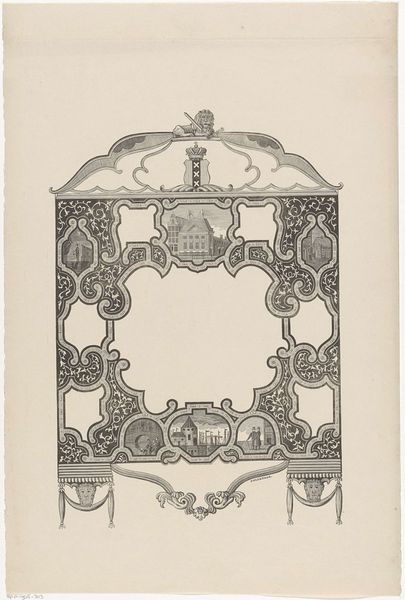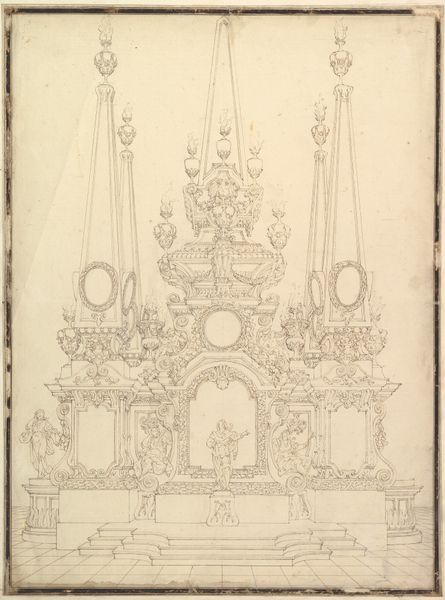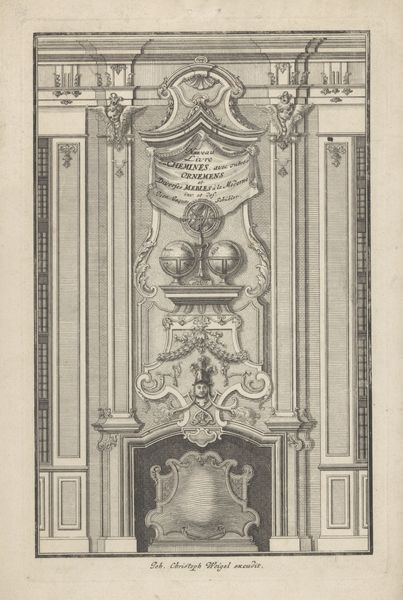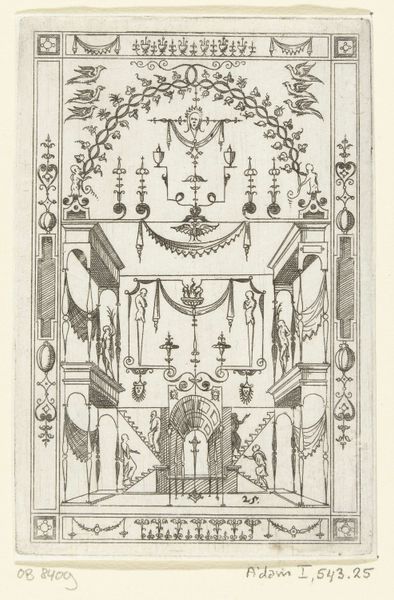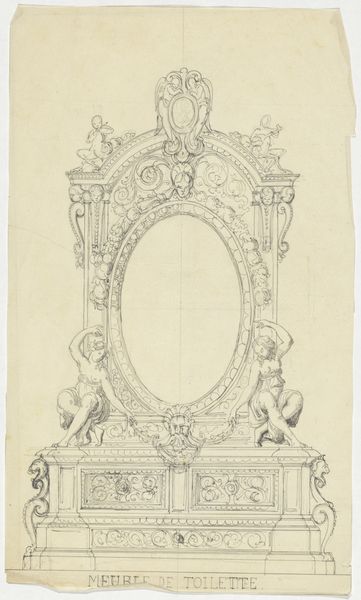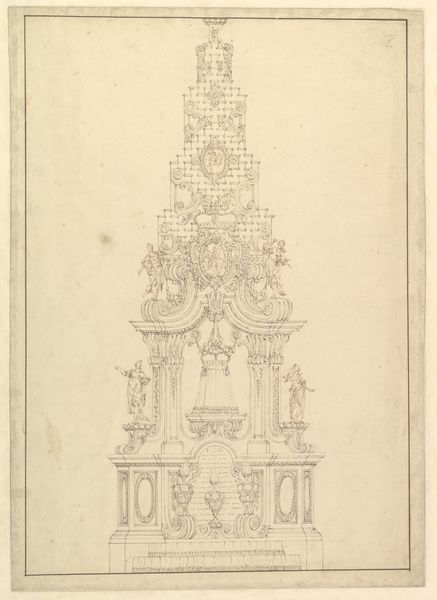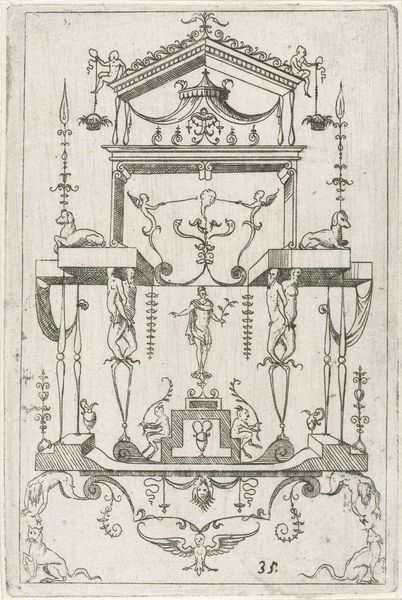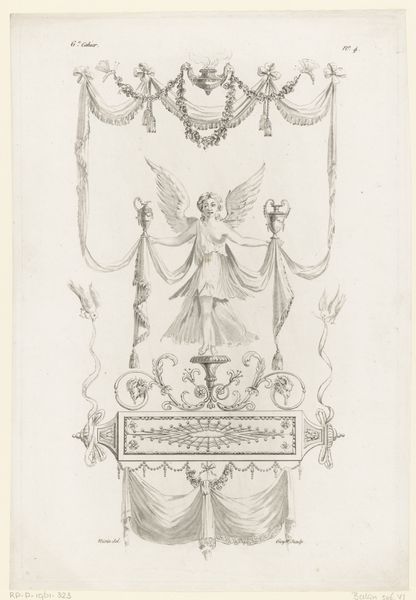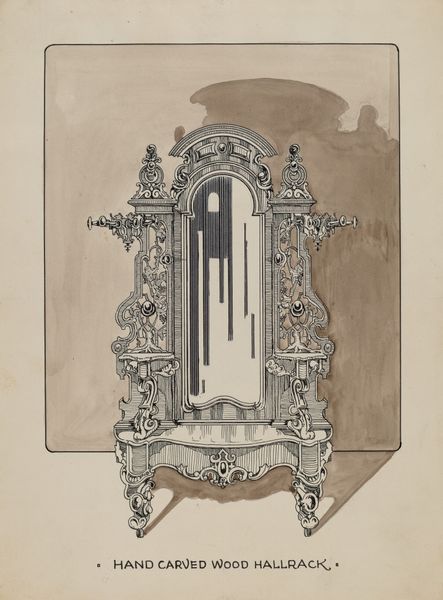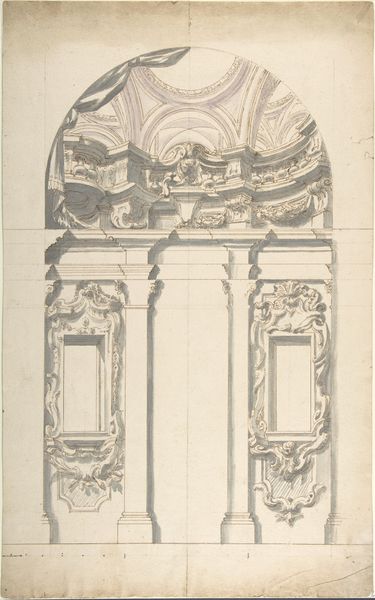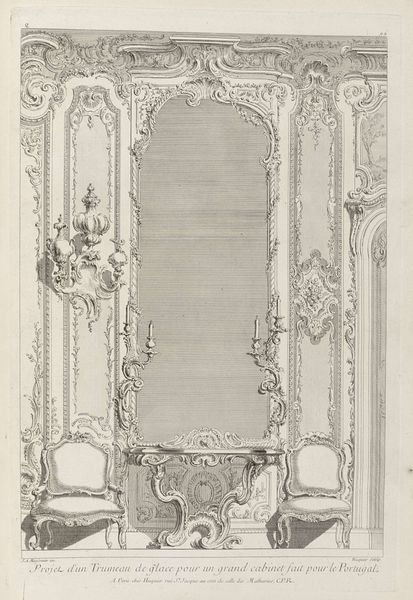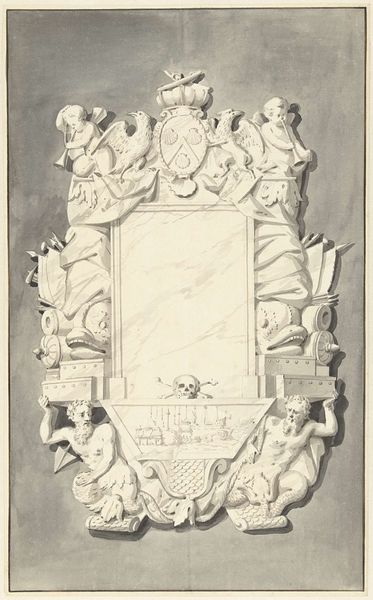
drawing, paper, ink
#
drawing
#
baroque
#
paper
#
ink
Dimensions: height 345 mm, width 250 mm
Copyright: Rijks Museum: Open Domain
Curator: This is a drawing entitled "Ontwerp voor een tuinornament," a design for a garden ornament, created by Daniël Marot the Younger between 1705 and 1769, rendered in ink on paper. Editor: It feels so light and airy. It's just a sketch, yet there's something grand about it. It's as though the fountain exists already in another dimension waiting to be built. That muted palette certainly adds a touch of solemn drama! Curator: The ornament's Baroque style reflects the opulence favored by European aristocracy and royalty during that period. Marot, himself, was employed designing interiors and gardens for them. His designs helped to visually legitimize the aristocratic establishment. Editor: I get that totally! There's an undeniable sense of imposing authority in the symmetry. Even though it's just ink, you can feel the cool stone and see it reflected in water! But the cherubic mask, gazing out – does that seem almost… mischievous, breaking the facade of perfect control? Curator: The inclusion of that mask speaks to the symbolic language of the Baroque. Ornamentation wasn't mere decoration, but communication. Classical motifs like the mask reference ancient traditions while serving the present ruler by association, essentially, to bolster legitimacy and demonstrate cultivated taste. Editor: Right, right, visual cues, layered meanings. Still, I see the fountain standing in shadow somewhere, water trickling down... a forgotten relic of an opulent past, silently laughing. Is that totally off? Curator: Not entirely. By the 18th century, tastes shifted; Neoclassicism rose, criticizing what was then perceived as the excesses of Baroque design. Fashions changed; aristocratic power saw itself reimagined. Thus the fountain, had it ever been built, might be considered obsolete in later years. Editor: History does loop sometimes. Maybe that's why it speaks now – a reminder of past visions and fading empires. Makes you wonder what we're building today that someone will be archaelogizing a few centuries down the road... Curator: Precisely. These artifacts always lead us to questions about our own culture, which in a way, mirrors those that existed before it. Editor: Spooky! It almost makes the cherubic face even more sardonic in that silent, watery ruin, but, anyway, thanks! That was enlightening and fun.
Comments
No comments
Be the first to comment and join the conversation on the ultimate creative platform.
